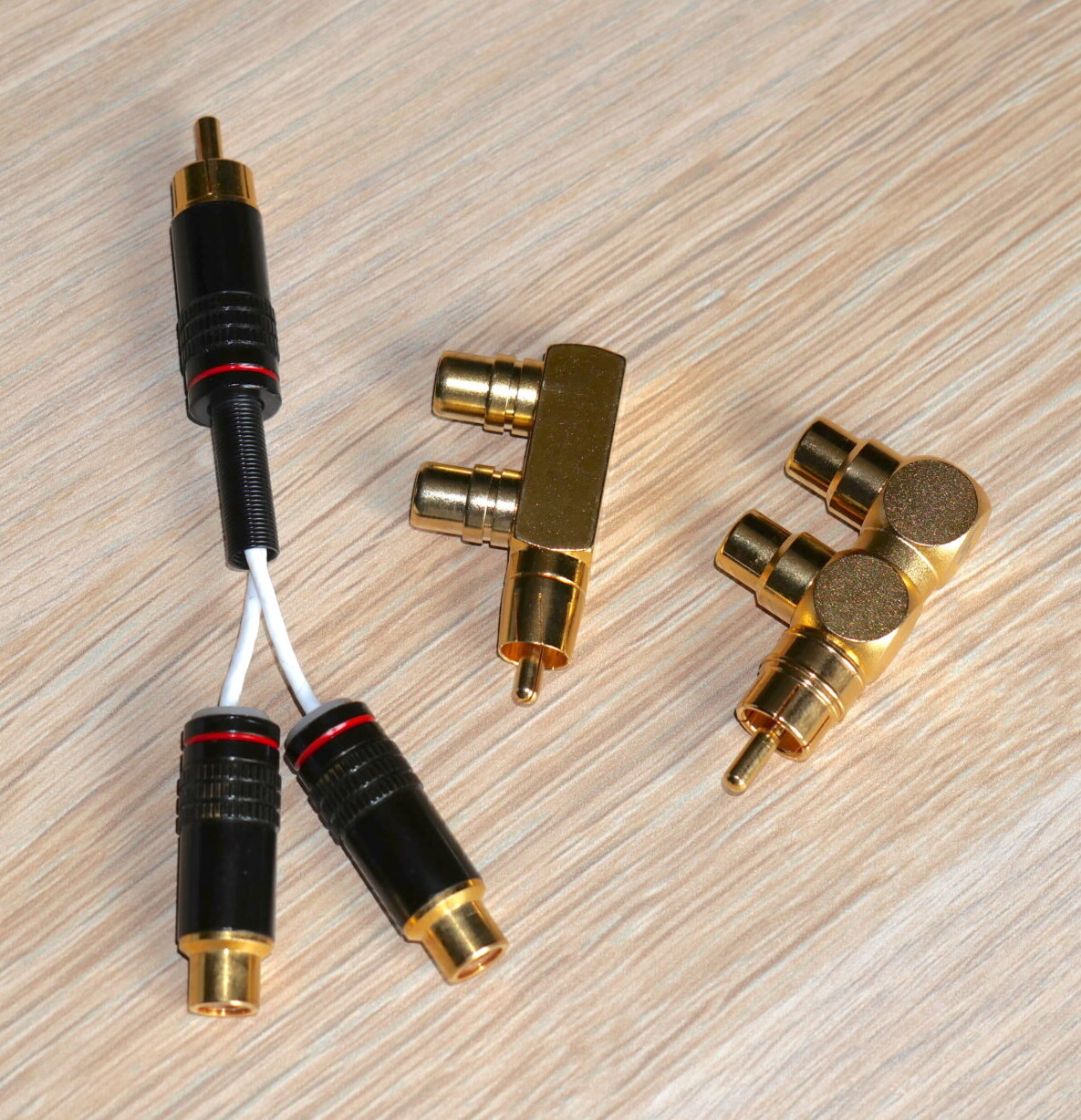 Having said that, not all adaptors are created equal. I had solid examples from AudioQuest and a no-brand factory in China, along with a set of ‘one plug to two sockets’ Y-adaptors from ModSquad. Of the three, the AudioQuest solid body versions were by far the best, with more musical weight, a warmer overall balance and (possibly as a result) a greater sense of energy, dynamics and presence – which as we shall see, definitely ticks all the boxes in this particular case.
Having said that, not all adaptors are created equal. I had solid examples from AudioQuest and a no-brand factory in China, along with a set of ‘one plug to two sockets’ Y-adaptors from ModSquad. Of the three, the AudioQuest solid body versions were by far the best, with more musical weight, a warmer overall balance and (possibly as a result) a greater sense of energy, dynamics and presence – which as we shall see, definitely ticks all the boxes in this particular case.
Assuming that the speakers are bi-wire ready – and the R25As are – then all you need to do is attach one side of the left channel amplifier to the bass binding posts, the other to the mid/treble. Then do the same with the right channel. If you are just playing around, then you can use different cables or different lengths of the same cable – but make sure that the same type of cable is used for the same purpose on both channels. Say you have a set of vdH interconnects and a set of AudioQuests, make sure that the vdH feeds the bass on both speakers and the AQ the mid/treble (or vice versa): Likewise the speaker cables. And do understand – if you are mixing and matching cables in this way (and who hasn’t?) you really are operating at the ‘playing around’ level.
Why not use one amp to drive the bass and the other the mid treble? Because the way that a single speaker loads the power supply means that bi-amping vertically sounds better, but it is also way more practical. Bi-amp horizontally and your two volume controls become the worlds crudest tone control! And while we are on the subject of what’s sensible, how about price balance across the system? Well, at €6,000 for the phono-stage, €3,900 each for the amplifiers and £6,050 for the speakers (in standard finish) the investment allocation makes sense. Although it is not a cheap system, nor is it extravagant or high-end, certainly in cost terms. Bear in mind also, that the Konus units are present in their most fancy form. De-scoping the amplifiers one step and the phono-stage two, brings them down to the Integrale/Vinyle 1000 price/component level (€2,300 each) making the basic set up far more approachable, while the units can still be upgraded to top spec. That’s a source+ system (meaning, everything required to play music except the source[s]) that starts at around €15, including a basic cable loom.
Partly because this ‘review’ was never planned but just kind of happened, its source+ nature meant that I tended to stick to the source components that were in situ. For vinyl, that means the Kuzma Stabi M with either the 4Point14 tonearm and Fuuga cartridge or the RigidFloat RF7c with Ortofon SPU Royal N. For digital I used the CH Precision D1.5/X1 combination which has fast become the go-to optical disc replay solution in the Reading Room where this system was set up. I’m well aware that either option far exceeds the price of the rest of the system, but that is in part the point. This is a system that punches well above its weight – in price and performance terms. How hard it can punch is the question and to answer it you need to up the ante on the source quality.

